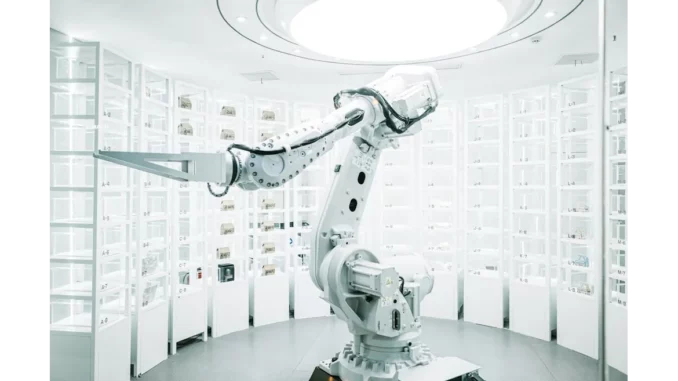
Summary
Data Storage Enters New Quantum Era with Revolutionary Optical Technology
In a significant leap for information technology, the “Quantum CD” emerges as a promising data storage solution, potentially increasing storage capacity by 1,000 times compared to current optical disks. This innovation leverages the principles of quantum mechanics to address the burgeoning demand for efficient data storage.
Main Article
The rapidly expanding digital landscape has placed unprecedented demands on data storage solutions, prompting researchers to explore new frontiers. The introduction of the “Quantum CD” could be the breakthrough the industry needs. With its ability to store vastly more data than traditional optical disks, this technology could revolutionise how information is stored and accessed.
The Science Behind the Quantum CD
At the core of this technology is the interaction between light and matter at the nanoscale, as outlined in a recent study published in Physical Review Research. The research examines the transfer of energy between rare earth emitters and quantum defects within magnesium oxide (MgO) crystals. Dr. Alan Thompson, a leading researcher in the field, explained, “Our study offers a detailed model of light propagation at the nanometer scale, which is crucial for developing ultra-high-density optical memory devices.”
The Quantum CD concept involves embedding rare earth elements in MgO crystals. These elements emit photons that are absorbed by adjacent quantum defects — vacancies in the crystal lattice with unbonded electrons. This process excites the electrons, facilitating data storage. Unlike conventional methods limited by light’s diffraction limit, the Quantum CD employs “wavelength multiplexing,” using slightly different light wavelengths simultaneously to store more data in the same space.
Potential for Long-term Data Storage
One of the groundbreaking aspects of this research is the potential for quantum defects to maintain data over prolonged periods. When quantum defects absorb energy from rare earth emitters, they transition to a spin state, which is challenging to reverse. This suggests the defects could act as stable data storage units, although as Dr. Emily Carter, a physicist involved in the study, noted, “Further research is necessary to determine the longevity of data storage using this method.”
Implications and Practicality
The implications of the Quantum CD are far-reaching. With the capability to generate smaller light wavelengths, narrow-band rare earth emitters facilitate a denser data storage method than current optical technologies. This advancement could produce storage devices with a density 1,000 times greater than today’s options. Importantly, unlike many quantum technologies that necessitate near absolute zero temperatures, the Quantum CD aims to function at room temperature, enhancing its practicality for widespread use.
Detailed Analysis
The Quantum CD represents a significant shift in data storage technology, driven by the need to accommodate the exponential growth of digital content. As data generation continues to surge, traditional storage methods face limitations in capacity and efficiency. The Quantum CD’s reliance on quantum mechanics not only increases storage density but also presents a sustainable solution that could reduce energy consumption compared to existing technologies.
This development aligns with broader trends in technology, where quantum mechanics is increasingly harnessed to solve complex problems. From quantum computing to secure communication, the principles underpinning the Quantum CD are part of a larger movement towards integrating quantum solutions into everyday applications. The potential for room-temperature operation further positions this technology as a viable option for immediate and practical implementation, setting it apart from other quantum-based innovations.
Further Development
As research progresses, the Quantum CD stands poised to transform data storage infrastructure. The next steps involve refining the technology to ensure reliable and long-lasting data retention. Researchers are also working on scaling the technology for commercial production, a critical phase that will determine its feasibility for mass adoption.
Industry stakeholders are closely monitoring these developments, recognising the potential impact on sectors ranging from cloud computing to consumer electronics. As the Quantum CD advances, it promises to reshape the digital ecosystem, offering a glimpse into a future where data storage limitations are a thing of the past. Readers are encouraged to stay informed as further research and developments unfold, with more in-depth coverage to follow in subsequent reports.

